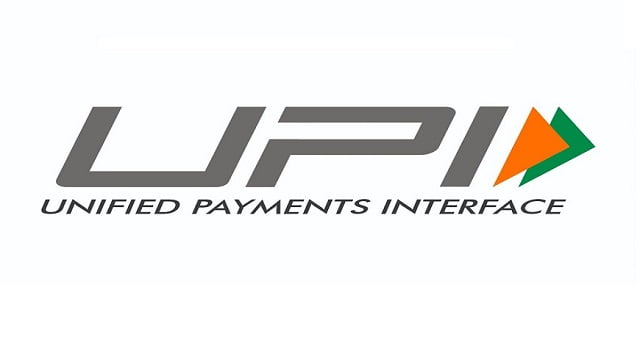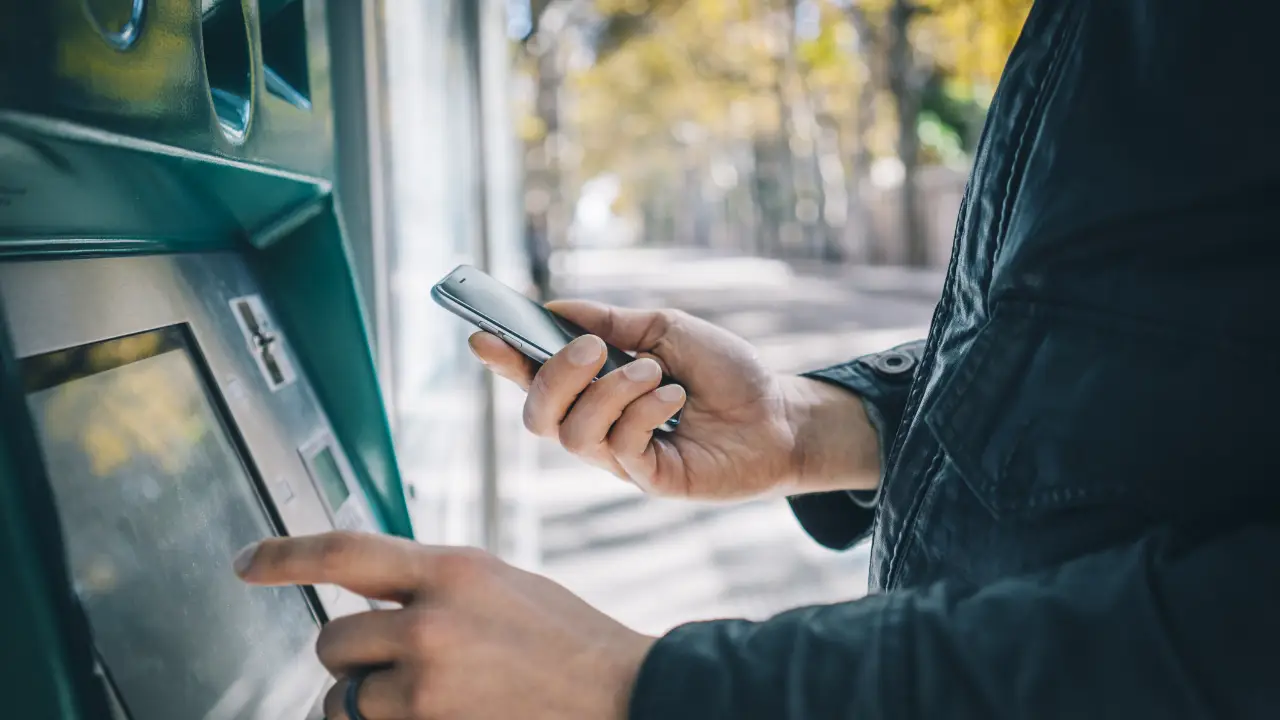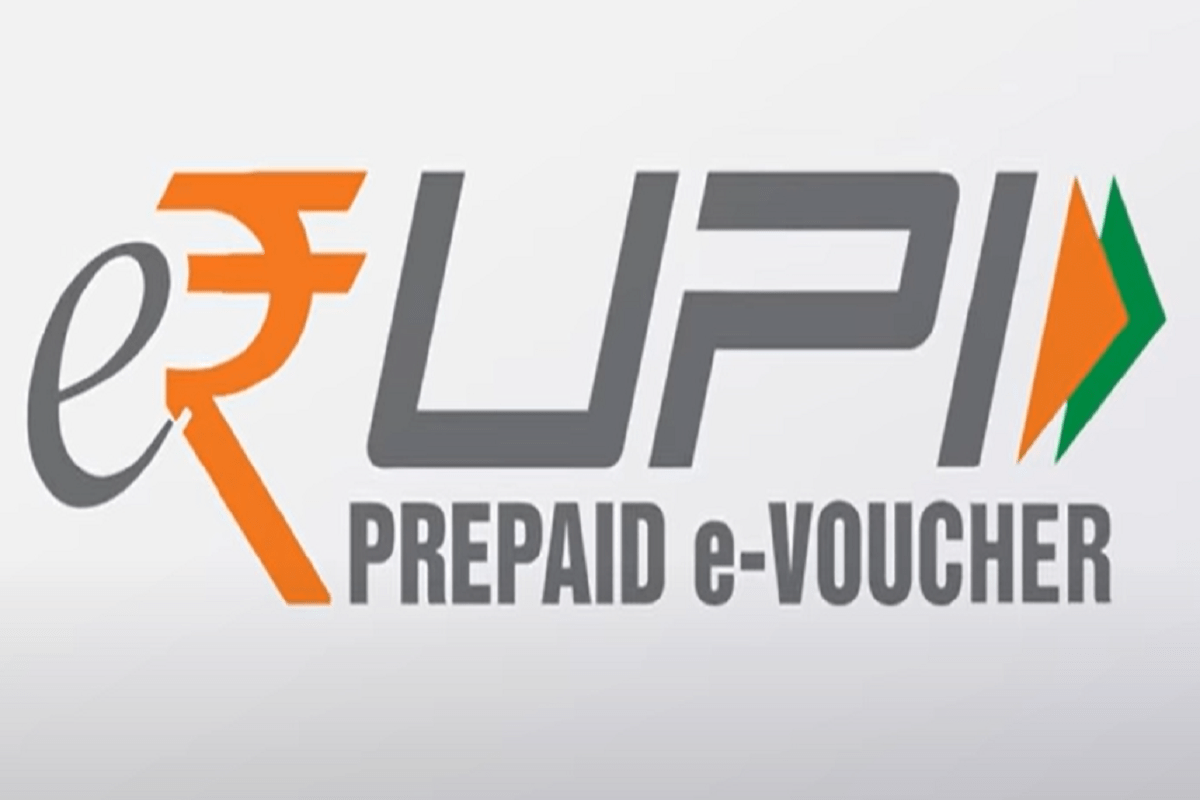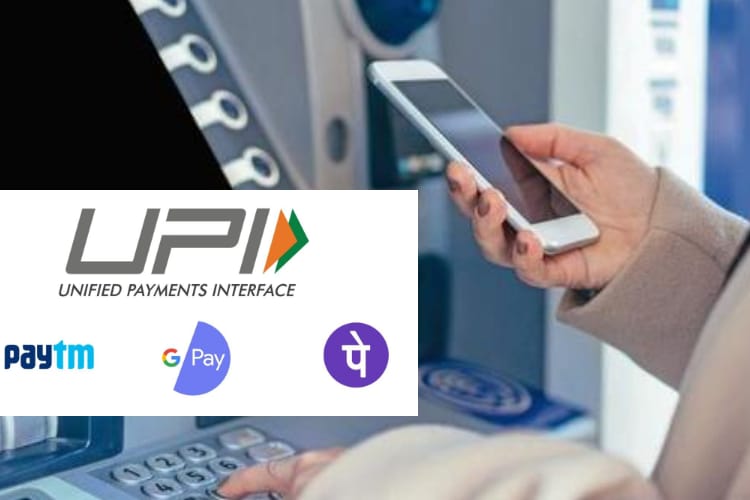RBI To Launch Cardless Cash Withdrawals At ATMs Via UPI

RBI To Launch Cardless Cash Withdrawals At ATMs Via UPI
The Reserve Bank of India (RBI) has launched interoperable cardless ATM withdrawals utilising UPI platforms today. T Rabi Sankar, deputy governor of the RBI, claimed that cardless cash withdrawals could be made from any bank’s ATM, a third-party ATM, or a White Label ATM when speaking at a monetary policy press conference.
“We would not cease providing credit or debit cards since they have many other utilities,” RBI Governor Shaktikanta Das stated. They can be used for more than simply cash withdrawals; they can also make payments in a foreign country. As a result, credit and debit cards will continue to exist.”
The Reserve Bank of India (RBI) will shortly issue recommendations to the National Payments Corporation of India (NPCI), ATM networks, and banks on starting using the service. Customers would not be required to use debit or credit cards to withdraw cash from ATMs if they used the cardless withdrawal option.
Customers will benefit from the transition, and fraudulent actions will be reduced. The RBI now allows only a few banks to facilitate cardless cash withdrawals using ATMs.
UPI users can withdraw cash from UPI-enabled ATMs using UPI apps like Paytm, Amazon Pay, and GPay. Users will no longer need to swipe cards at these ATMs; instead, they will be able to scan the QR code on the screen of the ATM and demand cash withdrawal via the UPI app.

The Success Story Of India’s UPI
As the world’s most successful real-time payments system, UPI provides P2P and P2M transactions in India with ease, safety, and security. UPI will begin operations in Nepal this year as the country works to digitise currency transactions and meet government and central bank goals.
In March 2022, UPI recorded 5.04 billion transactions, demonstrating its success. In 2021, UPI will have facilitated 39 billion financial transactions worth $940 billion, accounting for around 31% of India’s GDP.
The RBI enabled UPI payment facilities for feature phone users to boost digitalisation in the country in December 2021. The RBI released UPI123Pay, a feature phone version of UPI, on March 8, allowing feature phone users to conduct UPI transactions without the requirement for an internet connection.
In December 2021, the Cabinet authorised an INR 1,300 Cr scheme to incentivise small merchants’ MDR — charges paid on accepting transactions through low-value UPI transactions – to boost the use of domestic ways of digital payments.
But why has the Reserve Bank of India allowed interoperable cardless withdrawals only via the UPI platform?
This could have been driven by the increased popularity, adoption, and ease of use of UPI capabilities. “The RBI strives to make UPI a more adaptable payment option as its adoption and popularity grows,” says Adhil Shetty, CEO of BankBazaar.com. Up until recently, UPI was solely used for inter-account transfers. Withdrawals are now possible without the use of a debit card. “Today’s announcement paves the way for cardless withdrawal interoperability across all ATMs of all banks.” “This will make transactions easier and strengthen UPI as an all-around payment solution,” Shetty says.
How will the procedure function once it is implemented?
Not all banks now provide the UPI-linked cash withdrawal service. Here’s how it works in the case of banks: Assume you have a City Union Bank savings account (CUB). The bank allows customers to withdraw cash from ATMs by scanning their UPI QR codes. You must select the cardless withdrawal-QR-UPI option and enter the amount you wish to withdraw before moving on to the next page at such ATMs.
Please keep in mind that the bank has now set a limit of Rs 5,000 for UPI withdrawals. Then, using the BHIM, GooglePay, or PayTm apps, scan the QR code on the ATM, or scan it with your CUB UPI scanner in your mobile app. Double-check the amount in the mobile app, enter the pin, and click on pay. The final step is to go to the ATM machine and select the ‘press here’ tab for the cash option.
“While some banks have already enabled this UPI-linked cash withdrawal capability, it’s encouraging to see that all banks will soon offer this functionality, which will improve convenience and security,” says Sumit Gwalani, co-founder of neobank Fi.
What should I do if a withdrawal fails at an ATM after using this facility?
If a withdrawal at an ATM fails due to a technical problem, but the money is debited from your account, contact your bank right once. The money will be refunded back to your bank account within seven working days.

How does a cardless ATM cash withdrawal work?
Since the demonetisation drive, the banking sector has become more modern and adaptable. According to the current trend, you don’t even need your debit or credit card to withdraw money from ATMs anymore. SBI recently introduced the ‘YONO Cash’ cardless cash withdrawing service at ATMs.
Other lenders, such as ICICI Bank, allow similar services but differently. The real question is whether the trend of cardless cash withdrawals will continue. Many people, especially in rural regions, are unfamiliar with such aspects. Not only that, but the specified banks impose a limit on cardless cash withdrawals and transaction fees. As a result, if you’re planning to make a cardless cash withdrawal from an ATM, here’s a checklist to keep in mind.
How does cardless ATM withdrawal work?
One of the most significant benefits of using a cardless cash withdrawal service is that it eliminates carrying a debit or credit card with you. This service can be used to send money to someone or to withdraw cash from an ATM. All you need in both circumstances is your smartphone, which will assist you in notifying the transaction’s status.
This is how the technique works in general. To send money, you’ll need to enter the amount you wish to send and the recipient’s phone number and the bank or ATM that will handle the transaction.
The person receiving the funds will receive a text message on their phone with the amount, ATM location, and password. As a result, the recipient must utilise one of the ATMs associated with this service. The beneficiary doesn’t need to be a bank customer in question.
Although sending and receiving money usually is free of charge to the person receiving it, however, the person sending the money will be responsible for a fee that varies from bank to bank.

About UPI
The Unified Payments Interface (UPI) is a real-time payment system designed by the National Payments Corporation of India (NPCI) that allows for inter-bank peer-to-peer (P2P) and person-to-merchant (P2M) transactions. The RBI regulates the interface by instantaneously moving payments between two bank accounts on a mobile platform.
There are 304 banks on UPI as of February 2022, with a monthly volume of 452 crore (4.52 billion) transactions and a value of 8.26 lakh crore (US$110 billion). Until November 2021, UPI saw 6,800 crore (68 billion) in transactions. During the 67 months since its launch in 2016, the mobile-only payment system has helped transact 34.95 lakh crore.
The platform has 15 crore monthly active users in India as of May 2021. With an average value of $1,849 per transaction, the proportion of UPI transactions in total digital transactions increased from 23% in 2018–19 to 55% in 2020–21. In January 2022, the platform handled digital transactions of Rs. 8.31 lakh crore. The UPI reached $1 trillion in transactions in FY 2022.
History
The National Payment Corporation of India was established in April 2009 to integrate all of the country’s payment mechanisms and make them consistent for retail payments. By March 2011, the Reserve Bank of India had discovered that each Indian resident only engages in six non-cash transactions per year, even though 1 crore (10 million) merchants accept card payments. Around 14.5 crore (145 million) families do not have banking access. There is also the issue of combating black money and corruption, which occurs primarily in cash.
The RBI issued a four-year vision statement in 2012, indicating its commitment to developing a secure, efficient, accessible, inclusive, interoperable, and authorised payment and settlement system in India. It’s part of the Green Initiative, which aims to reduce paper usage in the domestic payments sector. UPI was first made available to the general public in 2016.
Under RBI’s direction, the National Payments Corporation of India (NPCI) was tasked with developing a new payment system that is easy, secure, and interoperable. UPI is based on a four-pillar interoperable push-pull approach, with a remitter/beneficiary front end PSP (payment service provider) and a remitter/beneficiary back end bank that settles monetary transactions for users. According to Netmagic Solutions’ CEO, UPI has become one of India’s most successful deep-tech innovations.
In December 2019, Google suggested to the US Federal Reserve Board that FedNow, a real-time payment system for the United States, be developed based on the success of the UPI.
According to ACI Worldwide and GlobalData, India overtook China and the United States as the world’s largest real-time payment market in 2020, with 2,550 crore (25.5 billion) yearly transactions.
Under the Interactive Voice Response project, NPCI collaborated with fintech start-up Ubona Technologies in 2021 to build a voice-based payment service for feature phone customers in low connection zones using the UPI payment ecosystem. For peer-to-peer (P2P) transactions, the system will combine Dual Tone Multi-Frequency (DTMF) signalling technology with a two-factor authentication (2FA) flow. It will be in beta testing from September 2020 to June 2021, pending RBI permission for large-scale implementation. By October 2021, the beta testing and pilot experiment were completed, and RBI began developing recommendations for use across the country.
According to the Economist Intelligence Unit Report 2021, UPI has positioned India as the global leader in real-time payment, followed by China and South Korea. Following the Ministry of Finance’s decision to abolish the merchant discount rate (MDR) on UPI in 2019, the number of low-value transactions increased, resulting in massive improvements in real-time transaction volume statistics. Many countries, including Brazil, Bahrain, Saudi Arabia, Singapore, the United States, and the European Union, are now attempting to replicate UPI’s success in their respective markets.
UPI has become a popular payment option for Initial Public Offerings since January 1, 2019. (IPOs). In March 2020, the transaction limit was raised from $1,000,000 to $2,000,000. The cap for Retail Direct Scheme and IPO applications was raised to $5,00,000 by the RBI in December 2021. RBI is considering a merchant discount rate (MDR) on future UPI transactions to make it commercially viable for payment providers.
UPI 2.0
UPI 2.0 was launched on August 16, 2018, allowing users to link their Overdraft accounts to a UPI handle. Users could also issue a mandate for a particular merchant to pre-authorise transactions. The 2.0 version added the ability to see and save transaction invoices. There’s also the option to set up AutoPay for recurring payments. SBI, Bank of Baroda, and Paytm Payment Bank have registered 6,60,000, 2,04,000, and 1,86,000 mandates on UPI AutoPay as of August 2021.
UPI 123PAY
The RBI has introduced 123PAY, a new UPI service geared toward India’s almost 40 crores (400 million) feature phone customers. RBI Governor Shaktikanta Das revealed the new function. UPI payments were previously exclusively available through smartphone payment apps and a USSD-based service for feature phones.
However, according to deputy governor T Rabi Shankar, the latter has been inconvenient due to the lack of service on numerous cell networks. For peer-to-peer (P2P) transactions, the system will use Dual Tone Multi-Frequency (DTMF) signalling technology with two-factor authentication (2FA) flow, similar to the normal UPI app, but with account number/phone number instead of QR code, which is included in the normal system of payment in feature phones.
Internationalisation
In 2021, around 77.7 crore (777 million) Indian customers will purchase across the border. On November 17, 2021, NPCI International Payments Limited (NIPL) signed a Memorandum of Understanding (MoU) with UK-based PPRO Financial to promote the use of UPI in global markets, particularly in China and the United States, where India accounts for half of all international transactions. Transact365, a UK-based fintech startup, enabled UPI for worldwide merchants with real-time currency translation on January 26, 2022, allowing them to do business in India without being physically there.
Remittance
Due to an increase in remittances to India, NIPL and Western Union will integrate UPI to make it easier for the Indian diaspora to receive and send money abroad. From the second quarter of 2022, the service will be operating. UPI ID will be used by IndusInd Bank and DeeMoney, a Thai financial service provider, to verify consumers in India for cross-border transactions. This is a part of the NPCI’s Money Transfer Operator (MTO) partners programme.
To improve the appeal of UPI internationally, IndusInd Bank plans to engage with additional foreign organisations. On January 27, 2022, NIPL signed a Memorandum of Understanding with Terra Payment Services of the Netherlands, which will enable UPI users to receive international payments in real-time from all around the world.
Service
Unified Payments Interface is a real-time payment system that allows money to be sent or requested from one bank account to another. Any UPI client app can be utilised, and a single app can be linked to several bank accounts. Money can be transmitted or requested using a user-created Virtual Payment Address (VPA) or UPI ID, allowing users to send or request money from a bank account using a KYC-linked mobile phone number. UPI produces a unique QR code for contactless payment for each user account.
Mobile apps
Payments and financial transfers from and to UPI-enabled banks are possible with any UPI app. Apart from third-party apps such as Google Pay (formerly Tez), PhonePe, Paytm, MobiKwik, Amazon Pay, Samsung Pay, WhatsApp Pay, and NPCI’s own app, BHIM, NPCI manages its own app.
As of February 2022, there are 304 banks linked to the UPI network, up from 21 in April 2016.
In June 2021, the National Payments Corporation of India (NPCI) lifted the ban on WhatsApp onboarding UPI customers, which had previously been limited to 2 crore (20 million) users. WhatsApp may now publicly deploy UPI to all of its clients in India, with 53 crore (530 million) registered users.
On-Device wallet
Because 50% of UPI transactions are less than $200 and occur at a higher frequency, there is a substantial backlog of volume, which increases the failure rate and jeopardises the payment network’s stability. As per the RBI directive, UPI mobile apps would have to include on-device wallet functionalities starting in December 2021 to conserve electricity and computing power for banks. By utilising the infrastructure of the mobile app developer, the in-built wallet will aid in low-value rapid payment, reducing the pressure on banks through the decentralisation of back-end infrastructure and resources.
Supported banks
The National Payments Corporation of India (NPCI) maintains a list of banks that support UPI. Payment Service Providers (PSPs) – which are mentioned with their UPI application and handle – and issuers are the terms used to describe banks in this context. PSPs are banks that have their own mobile application to facilitate transactions. In contrast, issuers are banks that do not have their own payments interface and rely on third-party software to conduct UPI transactions.

e-RUPI
e-RUPI (electronic Rupee and UPI) was created in partnership with the Department of Financial Services, the Ministry of Health and Family Welfare, and the National Health Authority. It went into effect on August 2, 2021. The goal of e-RUPI is to assure leak-proof delivery of welfare benefits while also reducing corruption by cutting out the middle man. The private sector can use the service for its own corporate social responsibility programme (CSR).
e-RUPI is a type of e-voucher that is delivered through a mobile phone and is based on a QR code or SMS string. e-RUPI will serve as a forerunner to the Central Bank Digital Currency (CBDC) that RBI will release in the future since it will aid in identifying holes in the national digital payment infrastructure.
On December 1, 2021, Financial Software and Systems (FSS) incorporated e-RUPI for financially underserved parts of society. The Government of Karnataka has partnered with NPCI to offer student scholarships via e-RUPI, which may be received on feature phones.

WITHDRAW MONEY FROM ATM USING UPI
- Another piece of wonderful news…. People around the country will soon be able to use UPI to withdraw money from ATMs.
- The Bank of India (BOI) has announced a new product collaborating with AGS Transact Technologies. This online payment systems provider will allow users to make UPI QR-based cash withdrawals.
- This is the first UPI QR-based cash withdrawal service in India, and it will be available at Bank of India ATMs.
Issues faced:
- People are increasingly concerned about ATM transactions due to escalating ATM frauds, card skimming, and other issues.
- With the advent of the new, we can make cash withdrawals without using a debit card or ATM card by scanning the QR code on the bank’s Unified Payment Interface App and the ATM.
- It would help if you were a Bank of India customer to use this service. The service is now accessible in Mumbai at a few of the bank’s ATMs.
- The Bank intends to complete the entire deployment in three to six months.
How the facility works:
- 1. Download the bank’s UPI app.
- 2. On the Bank of India ATM screen, select the QR cash feature.
- 3. Using the UPI app’s “scan and pay” option, select the amount to be withdrawn and scan the QR code created on the ATM screen.
- Users should be informed that they need to know two PINs to complete transactions using this method.
- One for launching the bank’s UPI app and the other for making UPI transfers.
- A one-time password (OTP) is not necessary in this case. Because QR technology is interoperable, it could become ubiquitous if the National Payments Corporation of India (NPCI) approves it.
Advantages:
- This technology adds another layer of security to ATM transactions by eliminating the need for a card and PIN.
- This is incredibly safe since even if you lose your phone, your PINs are still necessary to utilise this feature so that you won’t be a victim of fraud.
- Withdrawals are currently limited to Rs 2,000 per transaction by the bank. The terms and conditions for the number of free withdrawals and withdrawal costs will remain the same for debit card withdrawals.
It is also claimed that banks seeking to implement this on their ATM network will not need to make a significant investment because the service can be provided with a bit of change to existing ATM software.
General:
It’s worth noting that some other banks also provide cardless ATM withdrawals. SBI, India’s largest public-sector institution, offers cardless withdrawal. You can create a cash withdrawal PIN using the SBI Yono app. Users can withdraw cash from some SBI ATMs without a card using this PIN and an OTP.
The India Post Payments Bank (IPPB) also uses QR technology, albeit in a somewhat different way. IPPB offers plastic cards with QR codes that eliminate the need for a PIN. These cards also require a biometric verification layer, making them highly safe and secure.
edited and proofread by nikita sharma




